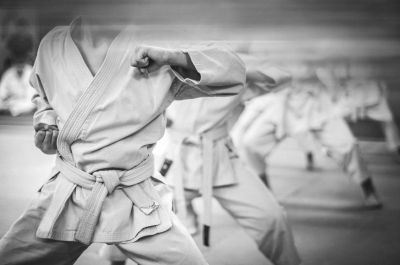Optimal Timing for Martial Arts Gradings
Gradings are a key milestone in martial arts training, marking the achievement of new skill levels and progress. Timing for gradings can vary based on individual development, training consistency, and specific martial arts styles. Understanding the optimal timing ensures practitioners are prepared and can showcase their skills effectively.
Many martial arts schools recommend scheduling gradings after a set number of training sessions or months, typically every 3 to 6 months.
Practitioners should reach a certain level of proficiency and demonstrate consistent performance before attempting a grading.
Instructors often advise students to wait until they have mastered specific techniques and feel confident in their abilities.
Physical conditioning and stamina are important; practitioners should be in good health and prepared for the physical demands of gradings.

Practitioners training diligently for gradings.

Students practicing techniques and forms.

Instructors planning grading schedules.

Monitoring skill development over time.

Practicing strength and endurance exercises.

Practitioners showcasing techniques.

Intensive training sessions for preparation.

Assessing confidence and skill levels.

Students performing techniques during tests.

Recognition of achievement.
| Aspect | Details |
|---|---|
| Training Frequency | Practitioners should train consistently, often weekly, to prepare for gradings. |
| Skill Development | Achieving proficiency in required techniques is essential. |
| Instructor Feedback | Regular assessments help determine readiness. |
| Physical Fitness | Maintaining good health supports successful gradings. |
| Preparation Duration | Typically ranges from a few months to a year depending on the level. |
| Seasonal Timing | Some schools prefer specific times of year for gradings. |
| Practice Assessments | Mock tests can help evaluate preparedness. |
| Mental Readiness | Confidence and focus are crucial for performance. |
Gradings serve as a formal recognition of progress and skill mastery in martial arts. They motivate practitioners to set goals, maintain discipline, and refine techniques. Proper timing ensures that individuals are adequately prepared, both physically and mentally, to demonstrate their abilities and advance to higher levels.
Statistics indicate that regular training intervals and consistent practice significantly improve success rates in gradings. For example, students who follow a structured training schedule and receive ongoing instructor feedback tend to progress faster and perform better during assessments. Scheduling gradings after intensive training periods or seasonal camps can also enhance performance outcomes.

Tracking skill development through training logs.

Students refining their forms and sparring skills.

Simulated tests to evaluate readiness.

Students receiving their new ranks.

Ways to make Gradings work in tight or awkward layouts.

Popular materials for Gradings and why they hold up over time.

Simple add-ons that improve Gradings without blowing the budget.

High-end options that actually feel worth it for Gradings.
Individuals interested in scheduling a grading should consider their training consistency, skill proficiency, and physical readiness. Contacting the training facility can provide guidance on the optimal timing for each practitioner based on their progress and goals.
